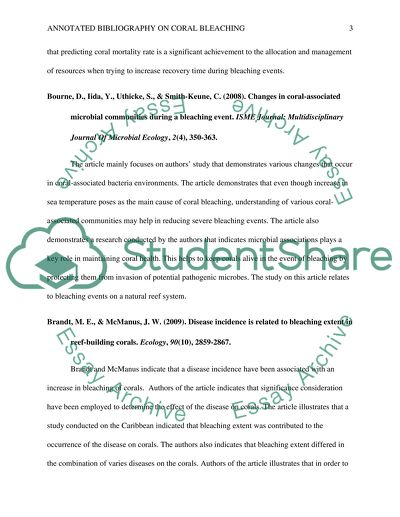Annotated Bibliography on Coral Bleeching Research Paper. Retrieved from https://studentshare.org/biology/1589418-annotated-bibliography-on-coral-bleeching
Annotated Bibliography on Coral Bleeching Research Paper. https://studentshare.org/biology/1589418-annotated-bibliography-on-coral-bleeching.


